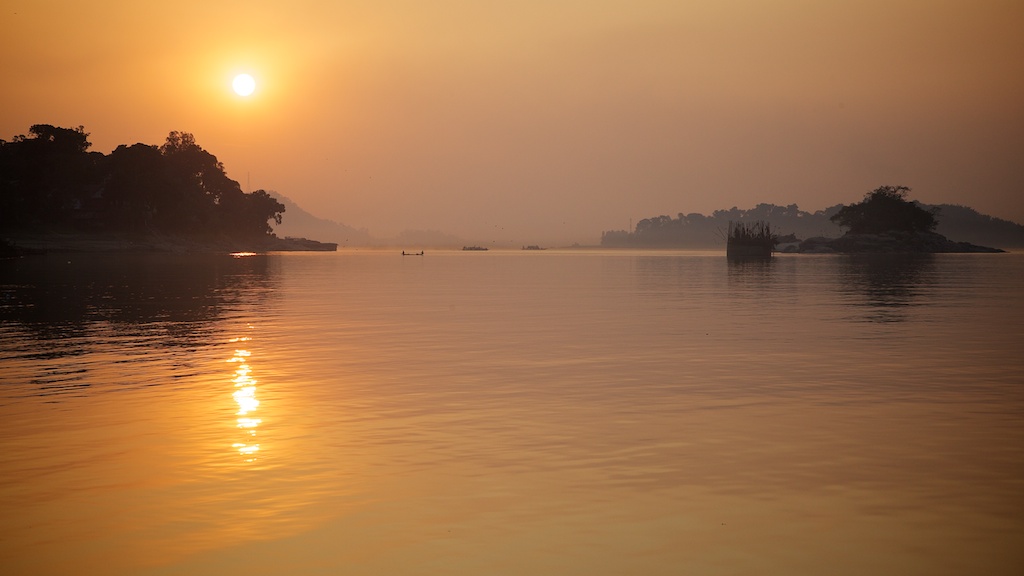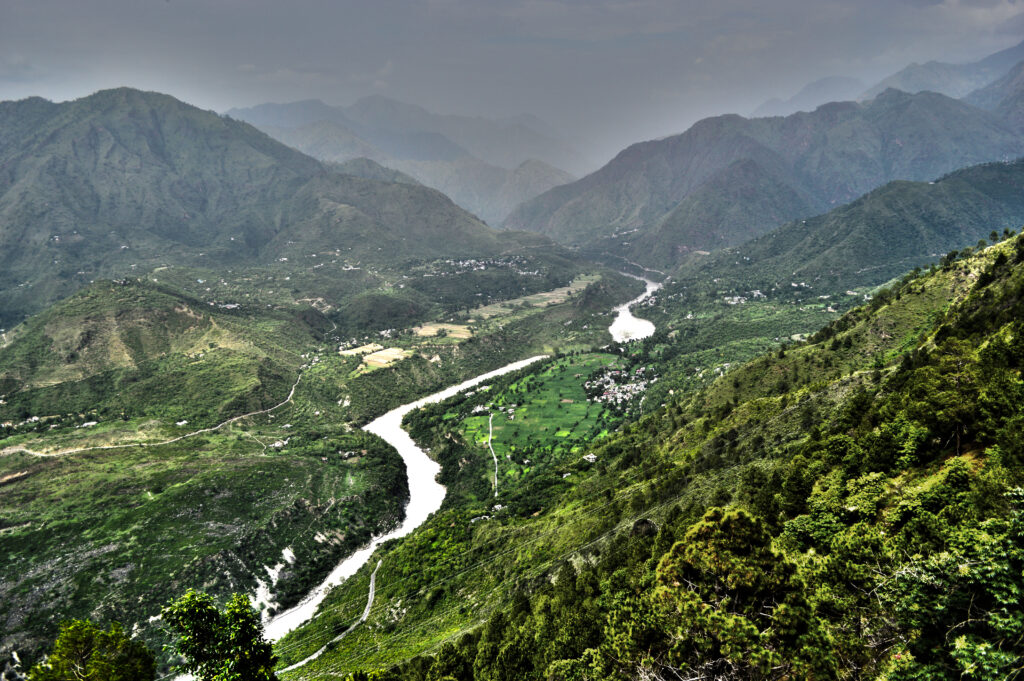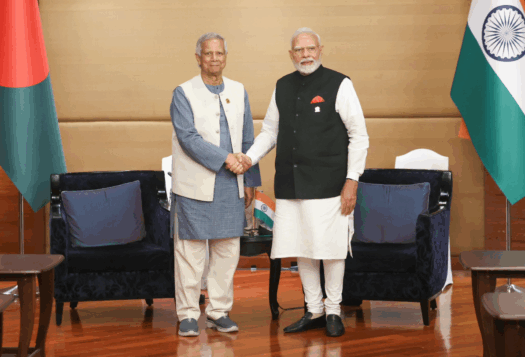
Chinese President Xi Jinping skipped the G20 Summit in New Delhi amid strained bilateral ties with India. Although recent friction or “abnormality” in the India-China relationship has primarily been a product of their disputed land border along the Himalayan frontier—as well as growing rivalries for regional influence and great power ambitions—management of shared river waters has emerged as another contentious dimension within their geopolitical rivalry.
India and China share several transboundary rivers, including the Indus, Sutlej, and Brahmaputra. If Beijing wishes to, it can utilize its shared waterways through potential hydropower exploitation without concern for adverse downstream effects on its lower riparian. As the international community remains focused on China’s belligerent activities in the South China Sea, Beijing has made swift progress on its dam construction activities along shared cross-border rivers. This has raised fears in downstream India over Beijing’s ability to control and alter water supply.
No other state matches China’s position as a multidirectional transboundary water provider, given its upper riparian control of several rivers originating in Tibet. Given the existence of a salient security dilemma between the two Asian powers, further compounded by shared waterways, there is a need for greater India-China river water cooperation, which targets deeper institutionalized mechanisms and confidence-building measures.
Transboundary Water Threat Perceptions
The Himalayan Rivers are an invaluable water source for both neighbors as rapid economic growth and developmental activities drastically increase domestic water demand. China and India are among the nations with the lowest per-capita freshwater availability. Both suffer from water scarcity and have been distressed due to multiple interlinked factors, including rising per capita consumption levels, industrialization, distribution, urbanization, pollution, and migration.
China and India are among the nations with the lowest per-capita freshwater availability.
India and China seek to maximize and leverage the transboundary rivers’ utilization to achieve their national goals. National imperatives remain to secure adequate water supply for agricultural production, food, and energy security, and promote sustainable development standards in water-intensive industries. Given rising tensions in the Sino-Indian relationship, however, and China’s innate geographical ability to leverage shared water resources as an upper riparian, India’s threat perceptions on securing water supplies from China have increased.
New Delhi’s primary concern stems from China’s water diversion and mega-dam projects along the Brahmaputra River. Of India’s total hydropower potential, roughly 44 percent lies in the Brahmaputra Basin. In 2002, China launched the South-North Water Diversion Project (SNWT), the largest water transfer scheme ever undertaken. The SNWT would divert up to 45 billion cubic meters of water annually from southern rivers to reach its dry north. New Delhi expressed concern that the Brahmaputra River may be diverted to the western route of the SNWT project. Such Chinese activities could reduce water flow to India, incurring significant socioeconomic, ecological, and environmental costs downstream. Conversely, excessive water flowing from China could cause flash floods in Assam and Arunachal Pradesh, threatening Indian residents downstream, similar to a major flood in 2000.
For instance, the Chief Minister of Arunachal Pradesh—an Indian border state with China—recently informed the state assembly that the Indian government had proposed constructing a large barrage on the Siang River. The purpose of this barrage was to keep Siang “alive” in light of potential threats from a mega-dam that China is constructing as a priority on the Brahmaputra under its 14th Five-Year plan (2021-2025).

The Chief Minister referred to the Motuo Hydropower Station, located on the Great Bend where the Brahmaputra curves sharply southward, gaining a substantial volume of water just before exiting China for Arunachal Pradesh. In response, the Modi-led government and Arunachal Pradesh’s state government rejuvenated and executed twelve stalled hydroelectric power projects in Arunachal Pradesh. The state government allotted the expected cumulative installed capacity of about 11,517 MW under the Union Ministry of Power.
India’s actions try to balance and reduce risks over China’s hydro-hegemonic behavior as the upstream neighbor. New Delhi has also initiated mega-hydropower projects on its side of the India-China border, with the USD $3.9 billion Dibang hydropower dam in Arunachal Pradesh being India’s largest-ever hydropower project. The Chairman of the state-owned Indian firm tasked with the project said, “This dam is for flood moderation, and hydropower is a by-product,” emphasizing the significance of building dams in border areas to counter possible threats of unexpected water release by China during a contingency, such as border clashes in 2020.
Water Diplomacy in a Turbulent Bilateral Relationship
While India has active water-sharing treaties with most of its riparian neighbors—including Pakistan (Indus Water Treaty) and Bangladesh (Ganges Water Treaty)—the absence of a legally binding Sino-Indian water treaty fails to tackle key questions of managing shared water resources. Sino-Indian diplomatic initiatives over shared river waters have not yielded significant dividends. Beijing’s ambiguity over information sharing, especially during India-China border tensions, makes New Delhi cautious of Chinese behavior. The convergence of Sino-Indian water disputes with larger territorial and political disputes further solidifies water as a source of rivalry, conflict, and tension.
Apart from water scarcity, the absence of trust and confidence, historical animosities, power asymmetries, and zero-sum thinking make it difficult to negotiate a Sino-Indian water-sharing treaty. China favors the status quo in the present state of river-water cooperation with India. As the downstream and weaker riparian, India’s key interests involve laying down formal water sharing and use principles. From China’s perspective, however, this would require considerable sovereignty and autonomy costs as well as limited political and economic gains. Beijing has little incentive to enhance riparian cooperation with New Delhi as it sees little benefit.
Beijing has been unwilling to settle existing water disputes with India and other riparian neighbors, choosing to conduct its water diplomacy bilaterally as part of its foreign engagements. Prime Minister Narendra Modi raised India’s concerns during his 2018 informal summit with President Xi Jinping.
While India has active water-sharing treaties with most of its riparian neighbors—including Pakistan (Indus Water Treaty) and Bangladesh (Ganges Water Treaty)—the absence of a legally binding Sino-Indian water treaty fails to tackle key questions of managing shared water resources.
New Delhi remains concerned that sharing hydrological data with India only comes as a product of China’s goodwill, which can easily be suspended or even terminated. After the 2017 Dokhlam standoff, Beijing suspended the sharing of river flow data with India—despite having multiple Memorandum of Understanding (MOUs) in place for hydrological data sharing in the Brahmaputra and Sutlej Rivers. More recently, after the 2020 Galwan border clashes, China also blocked the flow of the Galwan River (a tributary of the Indus) to alter its natural course and prevent it from entering India. Given Beijing’s hydro-hegemonic behavior, New Delhi should prepare for further hindrances in receiving river flow data from China.
New Delhi should realize that current MOUs may not be extended after their deadline. India needs to be prepared for contingency scenarios. This further implies the urgent necessity for New Delhi to consider active contingency scenarios and threat-based assessments on how Beijing could possibly try to weaponize shared water resources to attain military and strategic advantages in the event of an India-China armed conflict.
In addition to the operational Sino-Indian MOUs on sharing hydrological data, an India-China Expert Level Mechanism (ELM) was established in 2006 and has met annually since 2007 to discuss hydrological monitoring, flood forecasting, and management of shared water resources. The ELM could be an effective intergovernmental organizational platform to discuss Indian concerns regarding China’s hydropower projects in border areas. Regularizing and increasing the intensity of these interactions on a periodic quarterly basis involving various government, bureaucratic, academic, and societal stakeholders will further incrementally build strategic trust.
Confidence-building mechanisms such as the ELM represent a useful channel of building communication between the two sides that will help regularize their interactions, promote better understanding, and, most importantly, help prevent open conflict. If both states consider decoupling shared water resource management from other contentious issues—such as the land border dispute— it could be a first step towards greater river-water cooperation and trust building.
There is a dire need for greater institutionalized cooperation between Beijing and New Delhi on water issues. Strengthening existing bilateral cooperative mechanisms under active MOUs, such as the Expert Level Mechanism, which targets common challenges related to emergency management, pollution control, conservation, and development of river basins, could be useful. This would further strengthen trust and confidence on both sides while promoting active dialogue to resolve existing concerns.
Also Read: India-China Relations: The End of Hope for an Asian Century.
***
Image 1: Brahmaputra River via Flickr.
Image 2: Sutlej River in Himachal Pradesh India via Wikimedia Commons.


